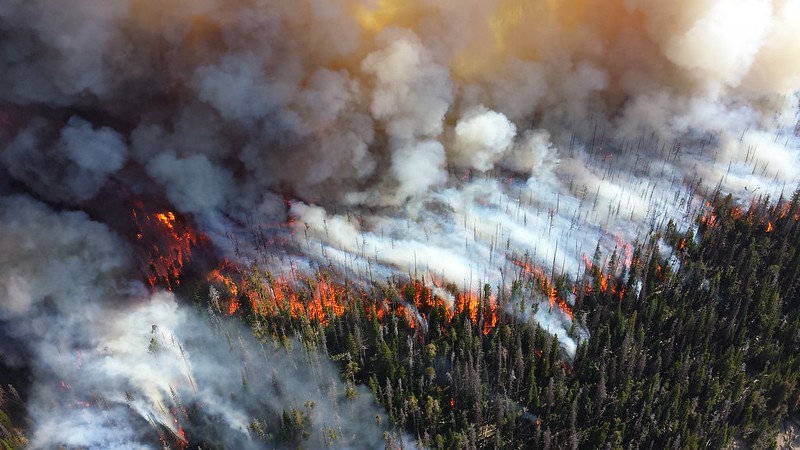The tribally owned radio station, KIDE FM, is located in Hoopa Valley, California. It resides adjacent to the Red Salmon Complex, where flames have been spreading. The fire is 31% contained now, but since late July, the smoke has been overwhelming.
Station manager Joseph Orozco commented on the smoke in early September.
“Today is a smoky day. We have a fire that’s over the ridge here,” he said.
At the time the fire had taken from 200 to 500 acres of land.
“-And it just like, rained ash on the whole valley. People woke up in the morning and we had ash on the cars. We had ash on the sheep. It covered everything,” Orozco said.
KIDE has been in this situation before. In 1999, they were so inundated with smoke that the CDC identified Hoopa Valley as having unhealthy smoke levels for 2 months. So from that crisis, people on the reservation learned to be familiar with smoke protocol: stay indoors and use HEPA filters if possible.
The Science Behind the Smoke
Hundreds to thousands of gases can be formed in wildfires. This fact was told to NPR’s Maddie Sophia by Atmospheric chemist for NOAA, Jessica Gilman.
She explained that when people breathe in smoke, the larger particles will hit the back of the throat first, “but the smaller particles can actually make it all the way down your throat and then deep into your lungs. And that’s where they start to cause all kinds of different health effects.”
She also said that because smoke can travel extremely far, “up to 80% or more of the continental U.S. is seeing the effects of the smoke.”
At the Very Least, Drink Water
Joseph Orozco said KIDE has learned to stay hydrated when the smoke gets overwhelming.
“When you start smelling that smoke-it can really get in your throat, and so we drink plenty of water because that is one thing that does help clear the lungs.”

